CAR
Elevating Your Tesla Model X with Premium Carbon Fiber Accessories

The Tesla Model X stands as a pinnacle of electric vehicle innovation, combining cutting-edge technology with luxurious design. For owners looking to enhance their Model X’s aesthetics and performance, carbon fiber accessories offer an unparalleled blend of style and functionality. This article explores the world of Tesla Model X carbon fiber accessories, delving into their benefits, popular options, and installation considerations.
Understanding Carbon Fiber: A Wonder Material
Before we dive into specific accessories, let’s examine what makes carbon fiber such a desirable material for automotive applications:
- Lightweight: Carbon fiber is significantly lighter than steel or aluminum, contributing to improved vehicle efficiency.
- Strength: Despite its low weight, carbon fiber boasts impressive strength-to-weight ratios.
- Aesthetics: The distinctive weave pattern of carbon fiber exudes a high-tech, premium appearance.
- Durability: Carbon fiber resists corrosion and withstands extreme temperatures.
These properties make carbon fiber an ideal choice for Tesla Model X accessories, enhancing both form and function.
Popular Carbon Fiber Accessories for the Tesla Model X
Exterior Accessories
- Carbon Fiber Side Mirror Caps
- Replace stock mirror covers with sleek carbon fiber alternatives
- Enhance aerodynamics while adding a sporty touch
- Carbon Fiber Spoiler
- Improve downforce at high speeds
- Create a more aggressive rear profile
- Front Lip Spoiler
- Reduce front-end lift
- Complement the Model X’s streamlined design
- Carbon Fiber Door Handle Trim
- Subtle yet effective upgrade
- Protect handles from scratches and wear
- Rear Diffuser
- Enhance underbody airflow
- Add a race-inspired aesthetic to the rear
Interior Accessories
- Carbon Fiber Steering Wheel
- Lightweight alternative to stock wheel
- Improved grip and tactile feedback
- Dashboard Trim
- Transform the cockpit with carbon fiber accents
- Available in various finishes (matte, gloss, etc.)
- Center Console Overlay
- Protect high-touch areas from wear
- Elevate interior ambiance
- Door Sill Protectors
- Guard against scuffs and scratches
- Add a premium touch to vehicle entry points
- Carbon Fiber Seat Back Covers
- Enhance rear seat appearance
- Ideal for Model X configurations with third-row seating
Benefits of Carbon Fiber Accessories for Your Tesla Model X
Investing in carbon fiber accessories for your Tesla Model X offers numerous advantages:
- Weight Reduction
- Every gram saved contributes to improved efficiency
- Potential for increased range and performance
- Enhanced Aesthetics
- Carbon fiber’s unique appearance sets your Model X apart
- Customization options to suit individual tastes
- Increased Resale Value
- Quality accessories can boost the vehicle’s desirability
- Demonstrate meticulous care and attention to detail
- Improved Aerodynamics
- Properly designed carbon fiber components can reduce drag
- Potential for smoother ride and extended range
- Durability
- Resist chips, scratches, and environmental damage
- Long-lasting investment in your Tesla’s appearance
Considerations When Choosing Carbon Fiber Accessories
While the allure of carbon fiber is undeniable, it’s essential to approach accessory selection thoughtfully:
- Quality Matters
- Opt for reputable manufacturers with proven track records
- Beware of counterfeit products that may compromise performance
- Fitment
- Ensure accessories are specifically designed for the Tesla Model X
- Poor-fitting components can affect aerodynamics and aesthetics
- Installation Complexity
- Assess your DIY skills honestly
- Consider professional installation for complex accessories
- Warranty Implications
- Understand how aftermarket accessories may impact your Tesla warranty
- Consult with Tesla service centers if uncertain
- Cost vs. Benefit
- Balance desire for upgrades with budget constraints
- Prioritize accessories that offer the most value for your driving style
Installation Tips for Tesla Model X Carbon Fiber Accessories
For those comfortable with DIY installation, here are some general guidelines:
- Preparation
- Work in a clean, well-lit environment
- Gather all necessary tools before beginning
- Surface Cleaning
- Thoroughly clean and degrease surfaces before applying accessories
- Use isopropyl alcohol for a residue-free finish
- Alignment
- Dry-fit accessories before permanent installation
- Use masking tape to mark correct positioning
- Adhesive Application
- Follow manufacturer instructions for adhesive use
- Apply evenly to ensure proper bonding
- Curing Time
- Allow sufficient time for adhesives to cure fully
- Avoid washing or exposing the vehicle to extreme conditions immediately after installation
Maintaining Your Carbon Fiber Accessories
To preserve the beauty and functionality of your Tesla Model X carbon fiber accessories, follow these maintenance tips:
- Regular Cleaning
- Use pH-neutral car shampoo and soft microfiber cloths
- Avoid abrasive cleaners or brushes that could damage the carbon fiber weave
- UV Protection
- Apply a UV-resistant sealant to exterior accessories
- Park in shaded areas when possible to minimize sun exposure
- Inspect Regularly
- Check for any signs of delamination or damage
- Address issues promptly to prevent further deterioration
- Avoid Extreme Temperatures
- While carbon fiber is temperature-resistant, extreme heat or cold can affect adhesives
- Use climate-controlled storage when possible
- Professional Detailing
- Consider periodic professional detailing to maintain optimal appearance
- Experts can apply specialized coatings for added protection
The Future of Carbon Fiber in Tesla Vehicles
As Tesla continues to innovate, the role of carbon fiber in electric vehicles is likely to expand:
- Structural Integration
- Potential for increased use of carbon fiber in vehicle chassis and body panels
- Further weight reduction and performance improvements
- Battery Enclosures
- Carbon fiber composites may play a role in next-generation battery designs
- Enhanced safety and thermal management properties
- Interior Applications
- Expanded use of carbon fiber in cabin components
- Potential for improved sound dampening and vibration reduction
- Recycling Advancements
- Development of more efficient carbon fiber recycling processes
- Increased sustainability in carbon fiber production and use
- Cost Reduction
- Ongoing research into more cost-effective carbon fiber manufacturing
- Potential for wider adoption across Tesla’s vehicle lineup
The Impact of Carbon Fiber Accessories on Tesla Model X Performance
While many carbon fiber accessories are chosen primarily for their aesthetic appeal, their impact on vehicle performance shouldn’t be underestimated:
- Aerodynamic Efficiency
- Properly designed carbon fiber body kits can significantly reduce drag
- Lower drag coefficients contribute to extended range and improved high-speed stability
- Weight Distribution
- Strategically placed carbon fiber components can alter the vehicle’s weight balance
- Potential for improved handling characteristics, especially in cornering
- Brake Cooling
- Carbon fiber brake ducts can enhance airflow to brake components
- Better cooling leads to more consistent brake performance, especially during spirited driving
- Reduced Unsprung Weight
- Carbon fiber wheels, while expensive, dramatically reduce unsprung mass
- Benefits include improved acceleration, braking, and suspension response
- Energy Efficiency
- The overall weight reduction from carbon fiber accessories can lead to increased energy efficiency
- Potential for slightly improved range in real-world driving conditions
Customization Options for Tesla Model X Carbon Fiber Accessories
One of the advantages of carbon fiber is its versatility in terms of appearance and finish:
- Weave Patterns
- Plain weave: Classic checkerboard appearance
- Twill weave: Diagonal pattern for a more subtle look
- Spread tow: Ultra-flat weave for a smooth, high-tech appearance
- Surface Finishes
- Gloss: High-shine finish that emphasizes the weave pattern
- Matte: Subdued look that blends well with the Model X’s paint
- Satin: Middle ground between gloss and matte
- Color Options
- Traditional black carbon fiber
- Colored carbon fiber (e.g., red, blue, green) for a unique twist
- Hybrid carbon fiber and other materials (e.g., carbon fiber and kevlar)
- Forged Carbon Fiber
- Unique marbled appearance
- Often used for complex shapes due to its molding properties
The Environmental Aspect of Carbon Fiber in Electric Vehicles
As sustainability becomes increasingly important in the automotive industry, it’s worth considering the environmental impact of carbon fiber:
- Production Energy
- Manufacturing carbon fiber is energy-intensive
- Ongoing research aims to reduce the carbon footprint of production processes
- Lifecycle Assessment
- While production may be energy-intensive, the weight savings over a vehicle’s lifetime can offset initial environmental costs
- Potential for improved overall environmental performance in long-term use
- Recycling Challenges
- Traditional carbon fiber recycling methods are limited
- Emerging technologies show promise for more efficient carbon fiber recycling
- Balancing Performance and Sustainability
- Tesla’s commitment to sustainability aligns with efforts to make carbon fiber more eco-friendly
- Future developments may lead to more sustainable carbon fiber alternatives
The Role of Carbon Fiber in Tesla’s Safety Innovations
Tesla is known for its focus on safety, and carbon fiber plays a part in this aspect:
- Crash Structure Enhancement
- Carbon fiber reinforcements can improve the vehicle’s crash absorption capabilities
- Potential for integration into future Tesla safety designs
- Battery Protection
- Carbon fiber composites may be used to create lighter yet stronger battery enclosures
- Enhanced protection against punctures or damage in collision scenarios
- Occupant Safety
- Carbon fiber interior components can be designed to deform in specific ways during impacts
- Potential for improved occupant protection without adding significant weight
The Future of Carbon Fiber Technology in Tesla Vehicles
Looking ahead, the integration of carbon fiber in Tesla vehicles is likely to evolve:
- Advanced Manufacturing Techniques
- 3D printing of carbon fiber composites for complex, optimized structures
- Potential for more efficient, less wasteful production processes
- Smart Materials
- Integration of sensors within carbon fiber structures
- Possibility of self-healing carbon fiber composites for improved longevity
- Nano-enhanced Carbon Fiber
- Incorporation of carbon nanotubes or graphene to further enhance strength and conductivity
- Potential applications in battery technology and structural components
As Tesla continues to push the boundaries of electric vehicle technology, the role of advanced materials like carbon fiber will undoubtedly expand. For Model X owners and enthusiasts, this means an ever-growing array of options to customize and enhance their vehicles, balancing performance, aesthetics, and sustainability in exciting new ways.
CAR
Buying a Used Car? Here’s How to Score the Best Deal in Canada

Your trusty car has finally given out. After years of loyal service, countless road trips, and maybe even some minor mishaps, it’s officially retired—never to spin its wheels again.
Now, you’re in the market for a replacement. You need something reliable, but you’re not looking to spend a fortune on a brand-new model. A used car makes the most sense for your budget, and you’re willing to take on the risks that come with buying pre-owned; as long as you can guarantee you’re getting a good deal.
How do you avoid buying a car that’s more trouble than it’s worth?
Choose the Right Dealership
You’ll want to find a reputable dealership with positive customer reviews and plenty of awards. For example, Autorama has been named the winner of the Top Choice Award for nine consecutive years. It has been recognized as one of Canada’s “Most Recommended” car loan providers by Finder and The AutoTrader Best Priced Dealer Award. As you can see, this is an excellent place to shop for used cars and get a great deal.
What else can you look for? Credentials. When looking for dealerships in Ontario, check for these key credentials:
- The OMVIC Registration (Ontario Motor Vehicle Industry Council) is mandatory for all dealerships in Ontario. OMVIC regulates the motor vehicle sales industry to ensure fair business practices and protect consumers.
- The UCDA Membership (Used Car Dealers Association of Ontario) is another indicator of trustworthiness. The UCDA represents more than 5,000 dealers in Ontario, ensuring they follow ethical practices and provide full disclosure to buyers. While membership is voluntary, it’s a good sign that a dealership is reputable.
Checking for these credentials helps you avoid scams, overpriced vehicles, and unreliable sellers, ensuring you’re getting a fair deal.
Thinking of Buying from a Private Seller? Think Twice
Yes, you can technically buy a used car from a private seller, and at first glance, the price might seem more affordable. But is it really a good deal?
When you buy from a private seller, there’s no way to confirm the car’s full history. Even if they provide a vehicle history report, there’s no warranty, financing, or return policy. Additionally, private sellers are not legally required to offer the same consumer protections as registered dealerships.
At a dealership, you get:
- Certified vehicle inspections
- Warranties for added protection
- Financing options to fit your budget
- Customer service support
With a private seller, you’re on your own. If something goes wrong, there’s no one to help.
Short-Term Savings vs. Long-Term Value
It’s tempting to go for the cheapest option, but a low price doesn’t always mean a good deal. A car that’s barely holding on might save you money upfront, but you’ll spend much more on repairs and maintenance. Worse yet, you could find yourself back in the market for another car sooner than expected. Instead of going for the lowest price, invest in quality.
Drive Away with Confidence
By following these tips, you can walk into a dealership with confidence, knowing exactly what to look for and what to avoid. As you pull out of the dealership in your brand-new not-so-new car, you’ll feel amazing, knowing you made the right choice.
CAR
Top Benefits of Auto Towel Seat Covers for Your Vehicle
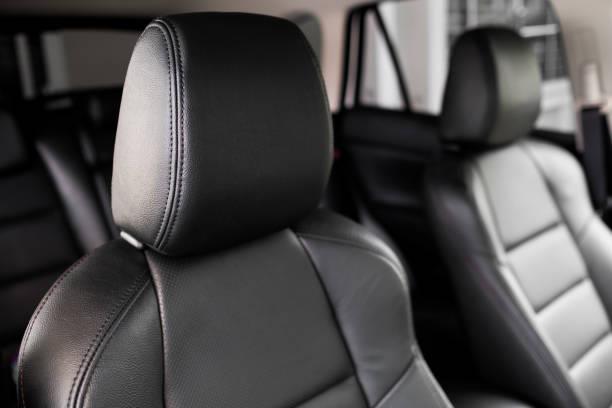
Introduction
Auto towel seat covers are a versatile and practical option for car owners who want to protect their vehicle seats while also adding comfort and style. Unlike other materials, towel seat covers offer unique benefits that make them particularly appealing. These covers are designed to fit over your car seats to protect them from spills, dirt, and damage.
Why Choose Towel Seat Covers for Your Car?
Towel seat covers are a favorite among car owners for several reasons:
Material Benefits:
- These covers are made from absorbent materials, which can effectively manage moisture and spills. This makes them ideal for use after sports activities or beach trips.
- Towel car seat covers are easy to put on and take off, which means you can wash and reuse them effortlessly. This flexibility is unmatched by many other types of seat covers.
- These covers are generally more affordable than their leather or fabric counterparts while being available in a range of styles and colors to match personal tastes.
For additional insights on auto towel seat cover materials, visit a poll on Reddit.
Protection for Your Car Seats:
Auto towel seat covers are not only stylish, but they also serve an essential function, protecting your car seats from damage. Let’s explore how these covers can be your vehicle’s best friend.
- Guard Against Spills and Stains: Everyday mishaps like coffee spills or crumbs from snacks can leave lasting marks on your seats. Auto towel seat covers act as a barrier, keeping your original car seats clean and safe from permanent stains.
- Prevent Wear and Tear: Over time, regular use can lead to wearing out the original fabric or leather of your car seats. A car seat towel cover helps preserve the integrity of your seats by providing an extra layer of protection.
- Cost Savings: By using car seat towel covers, you protect your seats from wear and accidental damage, potentially saving on costly repairs or replacements. Keeping your car seats in good condition can also maintain or even boost your vehicle’s resale value.
Comfort and Convenience of Car Seat Cover Towels
Car seat cover towels offer more than just protection; they enhance your driving experience by adding comfort and convenience.
- Breathability and Softness: One key advantage of towel seat covers is their breathability. They allow air to circulate, preventing that sticky feeling you often get with other materials, especially during hot weather. Plus, the softness adds an extra comfort layer on long drives.
- Easy Maintenance: The cleaning is a breeze with car seat cover towels. Most are machine washable, making it easy to keep them fresh and clean without much fuss. Simply remove them, toss them in the washer, and they’re ready to go again.
Auto towel seat covers bring a combination of protection, comfort, and ease to your driving experience. Whether you’re aiming to extend the life of your car’s interior or simply looking for a cost-effective way to enhance comfort, these covers are a smart choice.
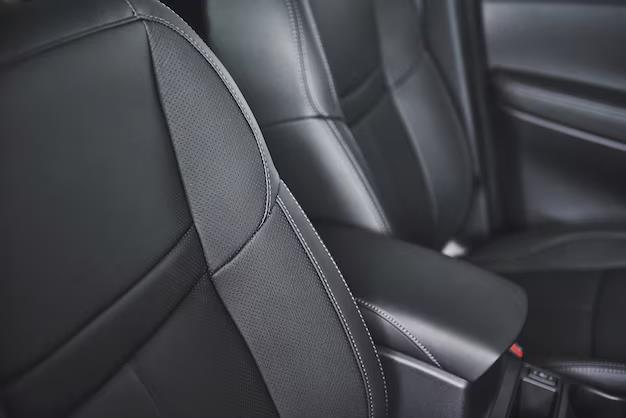
Enhancing Style with Auto Seat Towels
Auto seat towels are not just practical, they can also breathe new life into your vehicle’s interior. Here’s how towel car seat covers can enhance the style of your car:
- Variety of Colors and Designs: Auto seat towels come in a wide range of hues and patterns that can match the personality and preferences of any car owner. Whether you prefer bold, bright colors or subtle, muted tones, there’s a design for you.
- Customizable Look: By choosing designs that suit your taste, these covers can help personalize your vehicle. They offer an easy way to change the look of a car without a permanent commitment.
- Easy to Update: If you want to refresh your interior’s style periodically, swapping out auto seat towels can be a simple solution. This adaptability can help keep your vehicle looking updated with current design trends.
Having stylish seat covers can make your driving experience more enjoyable. For high-quality auto towel seat cover selections, consider visiting a reputable brand.
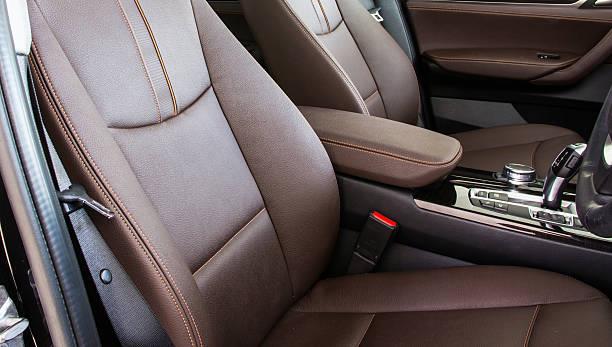
Easy Installation and Versatility
One of the key advantages of towel seat covers is their user-friendly installation and versatility. Here’s what makes them stand out:
- Effortless Installation: Installing towel seat covers is a breeze. They slip on easily over your seats, requiring no special tools or expertise. This feature makes them perfect for busy individuals who need quick solutions.
- Quick Removal: Just as easy to take off, these covers facilitate cleaning and washing without a hassle. You can remove them and wash whenever necessary, keeping your car interior fresh.
- Compatibility with Various Vehicles: Towel seat covers are versatile, designed to fit different types of vehicles from sedans to SUVs. This flexibility ensures they’re a valuable accessory for any type of car owner.
- Versatile Use: These covers can be switched between different cars or even used to protect seats during specific activities (like beach outings or after workouts), adding to their utility.
With their stylish designs and straightforward usability, auto towel seat covers are a smart choice for any vehicle owner looking to enhance both style and functionality.
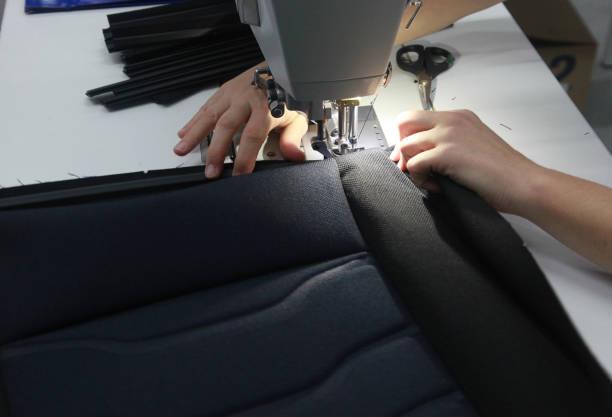
Affordable Car Seat Protection
Choosing towel seat covers offers a budget-friendly solution for protecting your vehicle’s interior. These covers are often more cost-effective compared to other materials, providing great value for money. Here’s why towel car seat covers are a smart choice for cost-conscious drivers:
- Cost-effective Purchase: Towel seat covers are generally less expensive than leather or other premium materials, making them an affordable option.
- Durability: While budget-friendly, these covers are durable and can withstand regular use, providing lasting protection for your seats.
- Savings on Maintenance: By safeguarding the original upholstery, towel seat covers can save you from costly repairs and replacements in the long run.
For additional guidance on auto towel seat covers, check out this helpful guide.
Maintaining Your Auto Towel Seat Covers for Longevity
Proper maintenance of your car seat towel covers ensures they stay in top condition and extend their lifespan. Here are some practical tips to maintain them effectively:
- Regular Cleaning: Wash your towel seat covers routinely to keep them fresh and free from stains.
- Cleaning Methods:
- Hand Wash: Use mild detergent and warm water for a gentle clean, which helps preserve the fabric.
- Machine Wash: If machine washing is recommended, use a gentle cycle setting.
- Air Dry: Always let your covers air dry to prevent shrinkage or damage from heat.
- Avoiding Excessive Sun Exposure: Prolonged sun exposure can fade the material, so it’s advisable to park in shaded areas where possible.
- Inspect Regularly: Periodically check the covers for any wear or tear, and address minor issues promptly.
By following these maintenance practices, you can keep your auto towel seat covers in excellent condition for years to come.
Note: This article adheres to Google’s content guidelines and incorporates external resources and studies to support the provided information.
CAR
Hit by an Uninsured Driver in California?
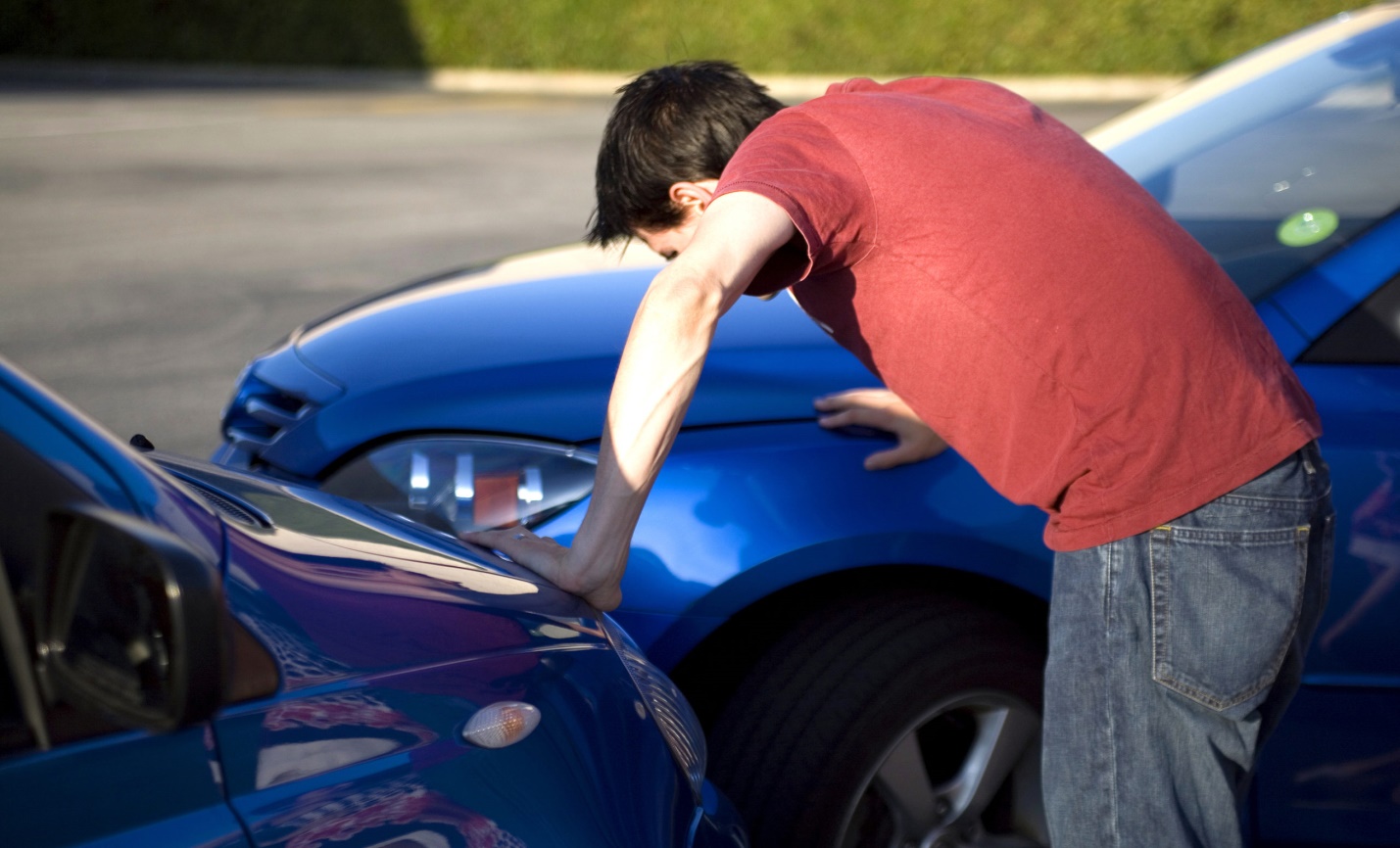
Getting into a car accident is stressful enough, but when the at-fault driver is uninsured, the situation becomes even more challenging. In California, where car insurance is mandatory, thousands of drivers still operate their vehicles without proper coverage. If you’ve been hit by an uninsured driver, you might feel overwhelmed about how to cover medical bills, vehicle repairs, and other expenses. The good news is there are options available to help you recover compensation. This article will guide you through the steps to take, your legal rights, and how a Canoga Park Car Accident Lawyer can assist you in navigating this complex situation.
Understanding Uninsured Drivers in California
Despite California’s strict laws requiring all drivers to carry liability insurance, many still drive without it. In fact, it’s estimated that nearly one in six drivers in California are uninsured. If one of these uninsured drivers causes an accident, recovering damages can become complicated because they lack the insurance to cover your losses.
Steps to Take After Being Hit by an Uninsured Driver
When involved in an accident with an uninsured driver, it’s crucial to take specific steps to protect yourself and strengthen your case. Here’s what you should do:
- Ensure Safety and Call 911
- Move to a safe location, if possible, and check for injuries.
- Call 911 to report the accident. A police report is essential, especially when dealing with an uninsured driver, as it serves as a key piece of evidence.
- Collect the Driver’s Information
- Even if the other driver doesn’t have insurance, gather their contact details, driver’s license number, and vehicle information.
- Document the Scene
- Take photos of the accident scene, your vehicle, and any visible injuries.
- Collect contact information from witnesses who can support your version of events.
- Notify Your Insurance Company
- Report the accident to your insurance company promptly. They may be able to assist you in covering your damages through your policy.
Insurance Options for Recovering Compensation
When the at-fault driver is uninsured, your ability to recover damages will often depend on your own insurance policy. Here are some key types of coverage that can help:
- Uninsured Motorist (UM) Coverage
Uninsured motorist coverage is designed specifically for accidents involving uninsured drivers. If you’ve added this optional coverage to your policy, it will cover medical expenses, lost wages, and other damages caused by the uninsured driver.
- Collision Coverage
Collision insurance covers the cost of repairing your vehicle, regardless of who caused the accident. However, this coverage may require you to pay a deductible.
- Medical Payments (MedPay) Coverage
MedPay can help pay for medical bills for you and your passengers, regardless of fault. It’s a valuable add-on in situations involving uninsured drivers.
Can You Sue an Uninsured Driver?
Yes, you can sue an uninsured driver for damages, but there’s a catch: many uninsured drivers don’t have the financial resources to pay for your losses, even if you win the case. This is why pursuing compensation through your own insurance policy is often the most practical solution.
However, if the uninsured driver has assets or other financial means, a lawsuit could be worth pursuing. A Canoga Park Car Accident Lawyer can evaluate your case and advise you on the best course of action.
How a Canoga Park Car Accident Lawyer Can Help
Dealing with an uninsured driver case can be legally and emotionally exhausting. Hiring a qualified Canoga Park Car Accident Lawyer can make a significant difference in the outcome of your case. Here’s how they can assist:
- Investigating the Accident
Your lawyer will gather evidence, review the police report, and build a strong case to prove liability.
- Navigating Insurance Claims
Insurance companies may try to minimize your payout, but a skilled attorney will negotiate on your behalf to ensure you receive fair compensation.
- Exploring Legal Avenues
If insurance doesn’t cover your losses, a lawyer can help you file a lawsuit against the uninsured driver or identify other potential sources of compensation.
- Maximizing Your Compensation
An experienced lawyer will ensure that all your damages—medical bills, lost wages, pain and suffering—are included in your claim.
Types of Compensation You May Be Entitled To
Even if the at-fault driver doesn’t have insurance, you may still be eligible to recover compensation through other avenues. Common damages include:
- Medical Bills: Current and future medical expenses related to your injuries.
- Vehicle Repairs: Costs to repair or replace your vehicle.
- Lost Wages: Compensation for time missed from work due to your injuries.
- Pain and Suffering: Non-economic damages for the physical and emotional toll of the accident.
Preventive Measures: Protecting Yourself in the Future
To safeguard yourself from financial losses caused by uninsured drivers, consider these tips:
- Add Uninsured Motorist Coverage to Your Policy: This coverage is invaluable in situations where the at-fault driver lacks insurance.
- Maintain Adequate Insurance Coverage: Ensure you have collision and MedPay coverage as part of your policy.
- Drive Defensively: Avoid accidents by staying alert and following traffic laws.
Conclusion
Being hit by an uninsured driver in California can be a frustrating and financially draining experience, but it’s not the end of the road. By taking the proper steps after the accident and understanding your insurance options, you can still recover compensation for your losses. Working with a trusted Canoga Park Car Accident Lawyer will provide the guidance and support you need to navigate this complex situation and maximize your chances of a favorable outcome.
-

 GENERAL1 year ago
GENERAL1 year agoDiscovering the Artistic Brilliance of Derpixon: A Deep Dive into their Animation and Illustration
-

 Posts1 year ago
Posts1 year agoSiegel, Cooper & Co.
-

 Lifestyle1 year ago
Lifestyle1 year agoPurenudism.com: Unveiling the Beauty of Naturist Lifestyle
-

 Lifestyle1 year ago
Lifestyle1 year agoBaddieHub: Unleashing Confidence and Style in the Ultimate Gathering Spot for the Baddie Lifestyle
-

 HEALTH1 year ago
HEALTH1 year agoTransformative Health Solutions: Unveiling the Breakthroughs of 10x Health
-

 Entertainment1 year ago
Entertainment1 year agoGeekzilla Podcast: Navigating the World of Pop Culture, Gaming, and Tech
-

 Entertainment1 year ago
Entertainment1 year agoKhatrimaza Unveiled: Exploring Cinematic Marvels and Entertainment Extravaganza
-

 BUSINESS1 year ago
BUSINESS1 year agoUnlocking the Secrets to Jacqueline Tortorice Remarkable Career and Accomplishments
